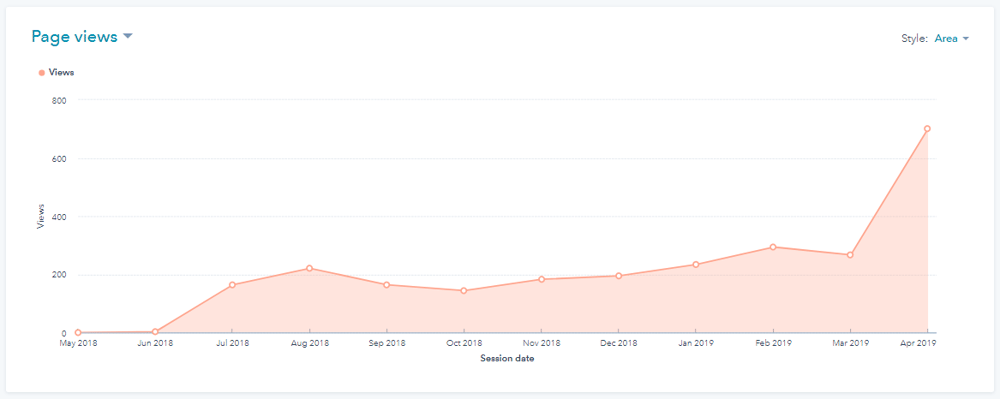Revenue River is now an Instrumental Group Company. Learn more.
call us: 303-945-4341
Revenue River is now an Instrumental Group Company. Learn more.

Just two years ago, eCommerce was responsible for $2.3 trillion in worldwide B2C sales. That number is expected to exceed $4 trillion in 2019. The benefits of selling direct-to-consumer are massive — a fact that was not lost on ALPS OutdoorZ.
ALPS OutdoorZ is one of several companies under the ALPS Brands umbrella, which offers a wide array of hard good products that cater to various outdoor lifestyle activities. ALPS OutdoorZ (just “ALPS” from here on) specifically caters to the $150+ billion hunting market. Founded in 2007 by Dennis Brune, ALPS OutdoorZ is a family-run manufacturer of high-performance gear for hunters of all levels, from the first-time weekend hunter to the lifelong veteran.
Traditionally speaking, the outdoor industry has always been accustomed to driving revenue through brick-and-mortar retail shops. The idea of going direct-to-customer by embracing eCommerce as a legitimate source of revenue can be daunting. The industry as a whole is late to the revolution and has been slow to accept the reality that customers are demanding a digital solution to shopping for outdoor gear. Gone are the days of relying on what’s always worked, as retail channels continue to struggle to grow same-store sales in the modern marketplace.
ALPS got on the digital bandwagon ahead of many of their peers and reaped some early rewards because of it. However, as is so often the case with frontrunners on the cutting edge of an industry, they weren’t able to simply create a magic formula and run with it. It was going to take more work — they needed to bring in strategic, expert help.
As a result, they approached Revenue River to help them master the digital world.

Relying mostly on retailers had started to run its course. The expectations of modern consumers were rising, and ALPS needed to bridge the gap between their brand and their customers.
Our goal was to help their in-house team maximize the effectiveness of their direct-to-consumer marketing and sales efforts — but we faced a number of challenges from the start.
ALPS needed an efficient, effective, and powerful system to automate their digital marketing efforts, track user behavior and sales, communicate with customers, and analyze the results. We knew the HubSpot platform would be a key piece to this puzzle, but we also knew we had to connect HubSpot to ALPS’ primary sales system hosted on OpenCart. Because OpenCart and HubSpot didn't have an existing integration, we knew there was a big challenge to overcome. We wouldn't be able to bring critical purchase behavior data into HubSpot without connecting the two systems. A custom integration was going to be necessary.
ALPS had already bought into the idea of selling direct-to-consumer, and their website was designed to make it easy for a visitor to make a purchase. The website was outdated, difficult to navigate, and presented some significant navigation challenges. In order to truly take their online business to a new level, we knew we had to make the UX even more intuitive. We knew there was a need to develop a customer-centric experience in which site visitors could educate themselves on the brand and products, then seamlessly follow an intuitive path to purchase.
ALPS didn't have a large customer database because the bulk of their sales had always come as a wholesaler. Retailers like REI and Cabelas made the transaction with the end customer, preventing ALPS from harvesting the same level of data. One of the biggest challenges for any direct-to-consumer business is actually getting those consumers to buy through the website. We knew it was worth the effort, however, because a happy customer is likely to become a repeat customer. We knew we had a huge opportunity to grow ALPS’ customer base through effective communication, customer service, and targeted promotion.
Our team recognized that it was critical to take a customer-centric approach to the campaign. While our goal was, of course, to solve for the client, we had to do it in a way that transformed ALPS OutdoorZ into a world-class eCommerce brand that made it easy for visitors to educate themselves, find the right products, and buy directly from the site.
The first step in this process was setting up an integration between ALPS’ eCommerce platform (OpenCart) and HubSpot, their new marketing automation platform. By connecting these two systems, sales and customer data would be able to flow between them, giving us insight into customer behavior and allowing us to track the results of our marketing campaigns.
Unfortunately, at the time (and still to this day) there was no native integration between HubSpot and OpenCart — we had to make it happen with a custom integration. ALPS’ lead developer, Andy Kolb, explains more:
It took a couple of months of work, but eventually, our teams set up one of the first custom integrations between HubSpot and OpenCart. By integrating the two, we finally had the capability to use past purchase and seasonality contact data in HubSpot, giving us the ability to send targeted, automated emails to leads and customers. Automation and segmentation tactics became much simpler as we could reach specific audiences with specific content messaging at the right time.
In short, our plan was to revamp how to use customer data to address customer needs and thus grow overall revenue. The power of the HubSpot-OpenCart integration was clear to all involved:
The ability to use HubSpot as their primary CMS allowed us to execute a more connected digital marketing campaign. We spent a lot of time connecting HubSpot with OpenCart, which allowed us to transform a high-level strategy into a more sophisticated approach from purchase data flowing into HubSpot contact records. Having that connection opened this campaign up to put critical eCommerce marketing automation into the mix.

To improve the user experience of ALPS’ website, we had two goals:
We knew we had to put first things first and start the redesign with the Home Page (HP). As the base location for the entire site, the HP needed to give visitors a clear path to find what they needed. As a hard goods manufacturer, we also knew we wanted to place ALPS’ products front and center.
Before our partnership, the former HP design left much to be desired. Using this archived data, you can see that the former HP design offered a high number of disjointed menu items, then led with a large block of text and a scrolling blog feed. We decided to reformat the header navigation, lead with featured product categories, then introduce content and other product information beneath the fold.
Here are some visual comparisons from before and after, (images expand when clicked).
After making these changes to the home page, we found that the different “Top Picks” product categories became some of the most-clicked links on the page. Giving users the ability to view products in different hunting types directly on the home page was clearly working.
We also saw an opportunity to improve the design of the product category pages and the individual product pages themselves. While certainly functional, the old design of the product category pages was basic, with a banner image and a grid display of the products in each category (see photo below and click to expand).
We knew there was plenty of room for more product information, increased user engagement, and secondary information sources that the user might find useful. Without overcomplicating the new page design, we redesigned the layout and added a few interactive filtering options (including hunt type and pattern/color) to ensure the user could find what she was looking for before clicking into specific products. (see photo below and click to expand).
We took a similar approach to the product detail pages as well. While the old design offered a product description, product details, and additional media (i.e. photos and videos) for the user to consume, we wanted to offer even more interactivity and opportunity for education. For the new design, we added filtering options, drop-down content blocks, highly coveted customer reviews, and a section at the bottom for related products.
While the functionality of the site was high on our list of priorities, we also wanted to give ALPS’ customers the ability to consume content relevant to the hunting lifestyle.
We decided to break this content strategy up into three content categories:
Ultimately, we hoped to give ALPS OutdoorZ a distinct voice in the digital space by developing content that would demonstrate their expertise in the field. Ultimately, we aspired to build up ALPS OutdoorZ as an industry thought leader while maintaining their Midwestern family-focused values.
And, since implementing this content strategy, the result is clear. Here’s the increase in ALPS’ monthly blog traffic in the past 10 months:

In addition to arming ALPS with a stellar content strategy, we wanted to make sure that their database of contacts continued to grow, providing ALPS with new leads and customers. Email marketing is still an extremely effective, high-ROI tactic for D2C brands, and we wanted to capitalize on that by promoting to the ALPS database.
But database growth on its own isn’t enough — we also had to ensure that the leads and customers in the system were only receiving relevant communications from ALPS. This led us to a three-tiered database strategy:
To effectively market to the vast number of people in the database, we first needed to segment it based on certain criteria. This would allow us to easily target specific groups with contextual messaging. While we could retroactively segment pre-existing contacts based on their behavior, we mostly relied on (and still rely on) the user to segment herself based on the information she includes when filling out an on-site form.
To build a solid foundation for our promotion efforts, we’ve since built a number of effective segments into the database, including Area of Interest, Hunt Type, and many eCommerce-oriented lists based around order size and repeat purchases.
After we’d developed relevant segments, it was time to implement techniques to keep the database in a state of growth. Besides the tried-and-true form system mentioned above, we came up a couple more solutions to help ALPS capture new email addresses:
With a segmented database and a strategy to grow it, step three now came into play: promoting to these contacts via email. Our email strategy was split between one-off promotional emails and automated sends.
ALPS’ one-off emails were often intended to promote various events, campaigns, or products. For example, we promoted the above Mentor Pledge campaign to the entire database, and will always share discount codes and closeout product deals with the appropriate segments.
The automated emails, on the other hand, mostly revolve around eCommerce processes, from abandoned cart reminders to custom product recommendations based on the customer’s last purchase. Within three weeks of executing abandoned cart emails, ALPS OutdoorZ generated five sales that totaled $850.
By leveraging the strengths of the in-house team at ALPS OutdoorZ, we successfully built their brand as an online vendor and expert in an emerging market and in the hunting community. Our success dashboards and HubSpot Analytics reports quickly validated our efforts and it was evident that the success we saw came from connecting major marketing and sales systems.
A year before our partnership and launch, ALPS OutdoorZ generated $95,424 across 671 online orders. Additionally, they recorded traffic at 131,816 site visits.
Through our strategy and execution, ALPS Outdoorz generated:
ALPS looked at us to be the digital growth experts, and we evaluated a lot of technology to put the best-of-breed pieces alongside HubSpot and OpenCart. Working together as a team with common goals allowed us to build the eCommerce Growth Machine and serve the ALPS customer base on a new level.

While it’s easy to fall into the routine of traditional methods, success lies in meeting the modern consumers where they are. Consumers are more tech-savvy than ever before. They have high expectations for their favorite brands. They're looking for access, service, easy and safe transactions, and convenience in dealing with customer service.
Building a digital presence that is true to your brand and speaks to your customers is essential to success, especially in the competitive world of eCommerce. When ALPS made the decision to invest in a stronger digital presence, they were making a decision to invest in their customers. From our point of view, that's why this project was successful. When you put the customer first in everything you do, you win.
If you’re like ALPS OutdoorZ, and you’re hungry to compete and win in the digital world, we know what it takes. Let's dig in on what you have in place, come up with some ideas for improvement, and show you how to get results like this for your brand.
